
|

|
Traveling in Puglia 2017 |

Ancient olive tree |
 Trulli village of Alberobello |
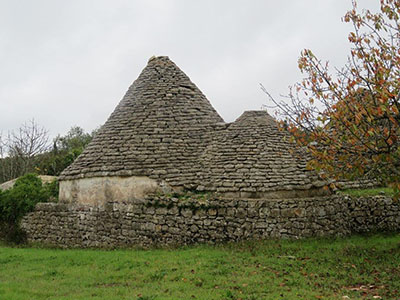 Centuries old Trulli house |
|
Sometimes known as Apulia, Puglia is also known as the 'Heel of Italy. It is a land of lush Olive trees and vineyards growing in rich brown and red soils; a land of mild wet winters and hot dry summers. Nine nights in rural Puglia, was very different than other Italy trips. First there are no major cities or museums one must see. Even the churches were not particularly dramatic. It is the countryside and the history; colonization of Turks, Greeks, Romans, Saxons, and Spanish. Each conqueror bequeathed a cultural, architecture and gastronomy. |
 |
| Puglia is most famous for its incredible olive oil production, providing around 60% of the country’s olive oil, which amounts to around 300,000 tons every single year from over 50 million trees. Many of them centuries old. This one is two thousand years old and still producing. You can go to http://www.masseriabrancati.com and order olive oil from these ancient trees. New production is available in each January. On this farm one can see the original Roman methods of making the oil. It was shipped all over Europe and the Middle East to be used to light lamps. |
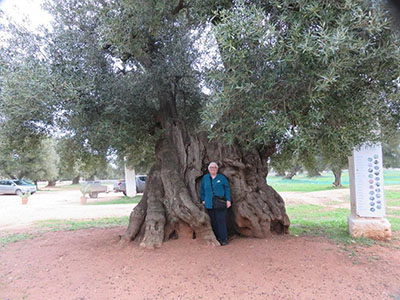 2000 year old olive tree and me |
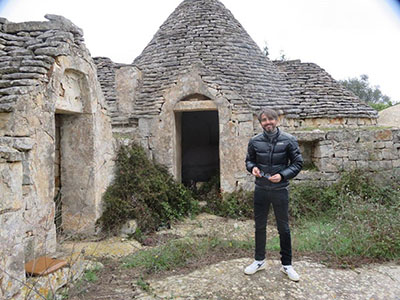 Gianlucca, my guide and trulli |
The rich farming heritage of Puglia is prevalent in the landscape picture, with mushroom shaped white trulli dotted all around. These stone dwellings date back to the Middle Ages and were once used as homes for the peasant farmers. Alberobello – a UNSECO site, is one of the best places to experience these, with more than 1000! |
 Guide describing Roman method of making olive oil |
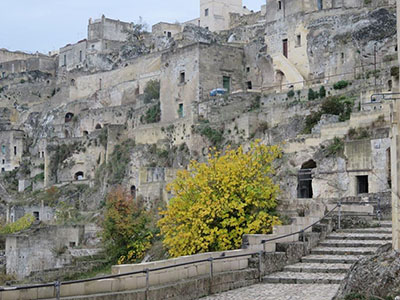 Matera ancient homes |
The area of what is now Matera has been settled since the Paleolithic. The city was allegedly founded by the Romans in the 3rd century BCE, now a UNESCO World Heritage site. The Sassi was the original prehistoric settlement. These dwellings are thought to be among the first ever human settlements in what is now Italy. The cave dwellings contained evidence that people have been continuously living in them since at least 7,000 BCE. |
The Sassi are habitations dug into the calcareous rock itself. Many of them are really little more than caverns, and in some parts of the Sassi a street lies on top of another group of dwellings. The ancient town grew up on one slope of the rocky ravine created by a river that is now a small stream. In the 1950s, the government of Italy used force to relocate most of the population of the Sassi to areas of the developing modern city. My hotel was in one of these ancient caves. There was a hole in the floor a cistern to collect and store water. |
 Matera, new town over the old |
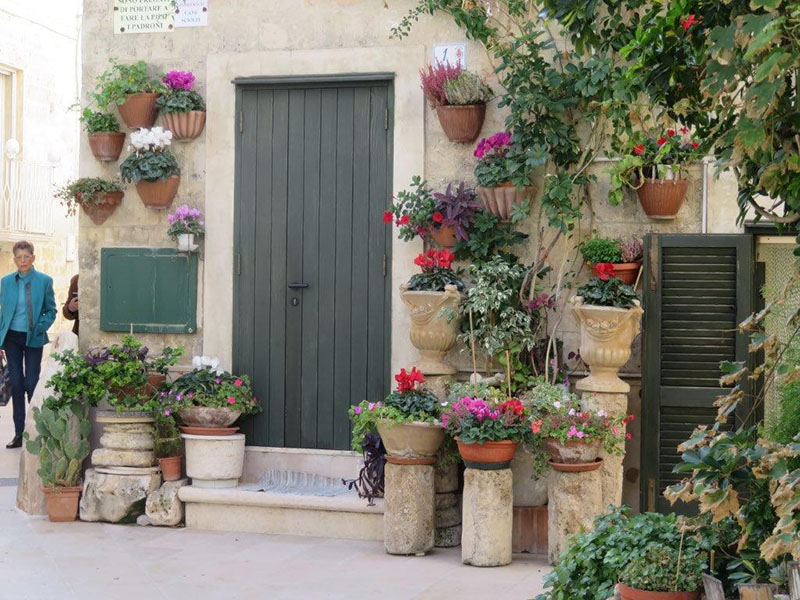 Monopoli front home entrance |
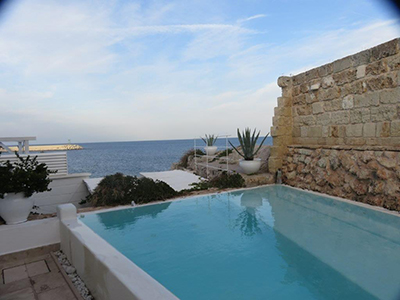 Don Ferrante, in Monopoli |
My nine night holiday made a circle. First in Monopoli, a small fishing town on the coast. My hotel Don Ferrante was the best, right on the rocky coast. The waves were below my window and could be heard all night long. In the summer they have a famous outdoor restaurant. Then on to Ostuni, in land a few miles. From my hilltop window view I could see olive trees all the way to the coast. The hotel here, La Sommità is a Relais Chateau with a Michelin star chef. |
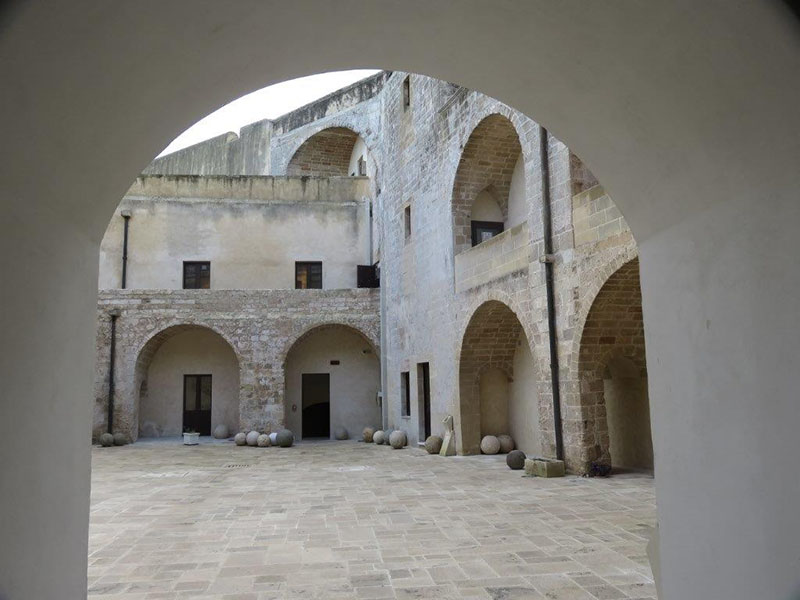 Forts everywhere along the coast, Otranto |
Lecce my third stop, is known as the ‘Florence of the South’. But it is not a Renaissance city it is Baroque and Roman. This Amphitheatre was right out my window. A short day trip to Otranto. In the old town, the cathedral features large-scale mosaics dating back to the 12th century. Unfortunately the cathedral was closed for renovations. South along the coast from Otranto are the Deer caves discovered in 1970. The current name alludes to the omnipresence and significance of deer depictions among the cave's galleries. The location was soon closed to the public in order to not to disrupt the original environmental conditions essential for the conservation of the paintings. Access to the cave remains restricted to authorized personnel and researchers only. |
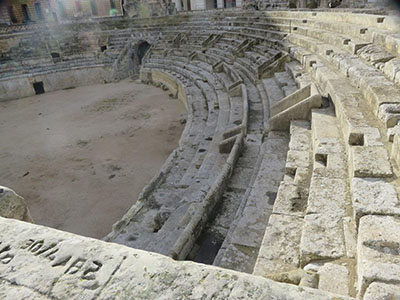 Roman Amphitheatre out my hotel window |
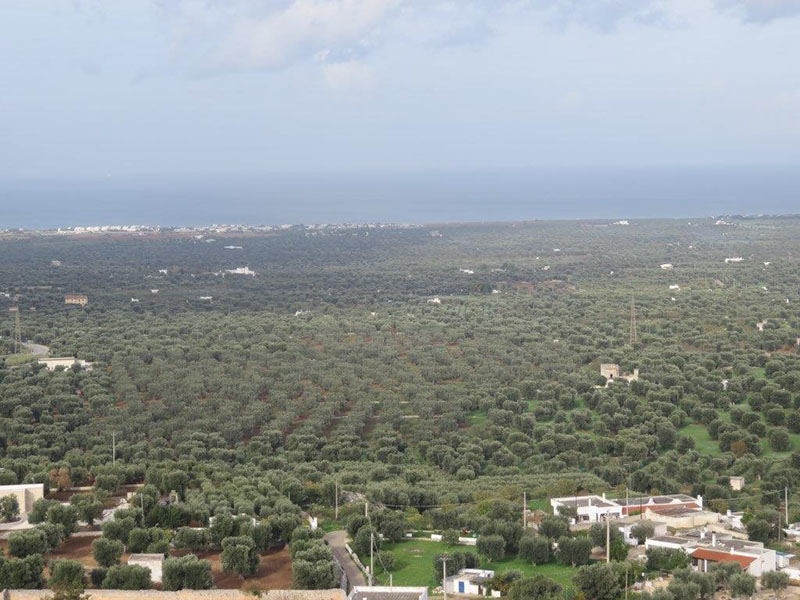 One more.. from as far as the eye can see to the sea |
|
Harriet
H. Ahouse | Independent Travel Consultant |